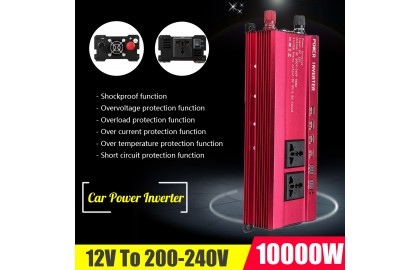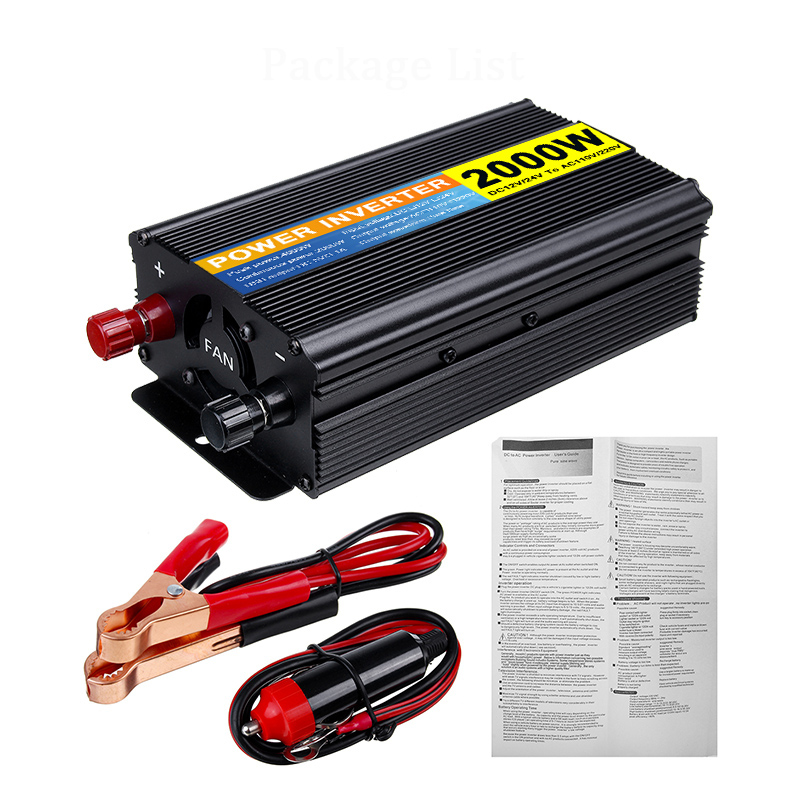The use of Elecdeer car inverter


Because the inverter is an electronic product, the design engineer has conceived all possible problems in all aspects before the design, so as to realize a more humanized product on the circuit. Therefore, general inverters will have protection circuits in three aspects: overvoltage, low voltage and power. But for inverters larger than 300W, not only the above-mentioned protections are included, but also additional circuits such as temperature, low-voltage alarm, and fan power control are added. Therefore, we will encounter many different operating errors during use.
When there is no load, the indicator lights of the inverter are normal, and the output voltage is also normal. But as soon as the load is plugged in, a beep will be heard and the red light will be on. The load is not working. The main reason for this kind of problem is that the battery power you use is not enough, so when the load is connected, because the load power is greater than the output power of the battery, the battery voltage will drop to the voltage of the low-voltage protection circuit, and the low-voltage alarm of the inverter will be connected to the low-voltage protection circuit. Protection circuits are working. This phenomenon generally manifests itself as: the sound is instantaneous (the protection circuit of some machines is self-locking, which can ensure that the battery, inverter, and load are not damaged), and the red light is on. Some inverters beep on and off, and keep beeping until you pull the load away. The red light turns on and off (this kind of power protection circuit is self-recovery, due to the load, the inverter battery is in abnormal conditions, and it is easy to damage the battery.
The inverter indication is normal, and the output voltage is also normal. But once the load is plugged in, the beeping will continue, and the load is working normally. This situation is also caused by improper use.
It is because the power of the battery you are using is not enough, causing the low-voltage alarm, but the voltage has not yet reached the voltage of low-voltage protection. So you will hear long beeping, but the inverter will work normally. There are two ways to deal with this problem: increase the battery or reduce your load.
It will appear that the inverter indicates normal, and the output voltage is also normal. But when you plug in the load, you will hear the beeping continuously. It may be caused by the input line you use is too small. This situation generally occurs when the inverter is modified more. The solution to the problem is to increase the input line. If it is 300W to 500W, use 6 square lines, and for 1000W, you need to use more than 10 square lines. The size of the line is also related to the length of your input line. For example, 1000W uses 10 square lines, which cannot be longer than 50CM. If you want to stretch the line, Which will use more than 16 square lines. The longest energy can be 1 meter.
Connected to the inverter, the red light is on, but there is no output. This situation is mainly because your battery may be overcharged and the voltage is too high. If there is a beep, the problem is that the battery voltage is too low.
Connected to the inverter fan does not turn. In general, the fans of the inverter are controlled by output power, that is, the fan speed is driven by the load you use. The advantage of this is that it can reduce the quiescent current and reduce the noise. Therefore, the fan is generally controlled to rotate above 100W, and it is normal for the fan to be less than 100W to not move.
As soon as the load is connected, the inverter shuts down. When it is restarted, the inverter is normal again, but it also shuts down when the load is connected. This situation is mainly due to the following reasons:
Inverter power protection due to excessive load power. For example, if an inverter with a nominal power of 300W is connected to a load of 350W, it will cause shutdown.
The peak of the inverter is not enough. Generally speaking, the peak value of the inverter is generally set at twice the nominal power. Such as a 100W inverter, the peak value can reach 200W. But sometimes, the peak value of your load is more than 3 times, even if your power is 90W, a 100W inverter cannot drive it, because the peak value of 3 times is 270W, which is greater than 200W. Therefore, when buying an inverter, you must pay attention to the peak value of the equipment.
Inverter power is not enough.
